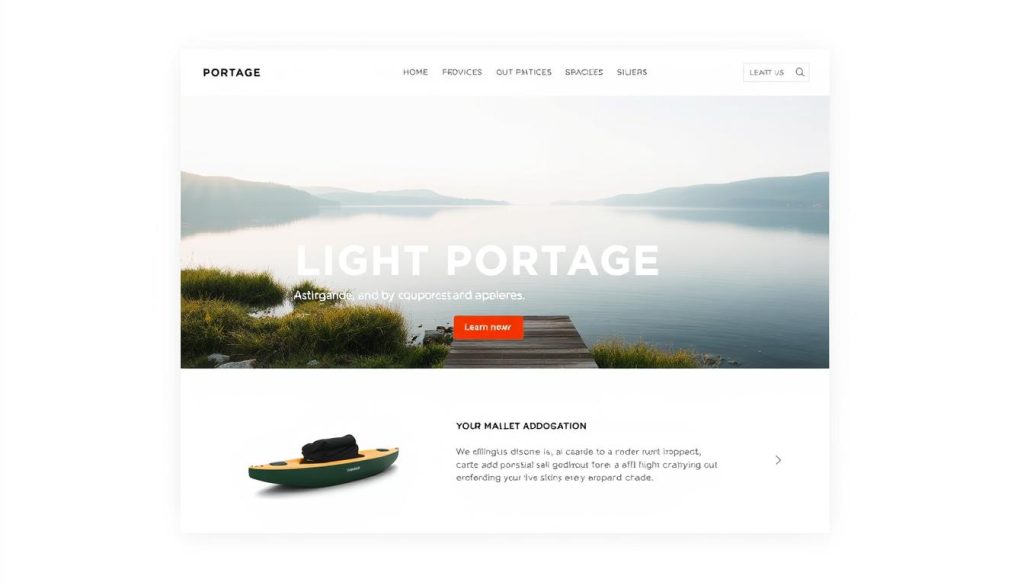Imagine Sophie, a freelance consultant in Paris who traded a steady job for freedom.
She felt confident but unsure how to attract the right clients without cold outreach.
We guided her to an inbound path that respected her brand and spoke to her ideal audience.
Within months she saw more qualified leads and steady inquiries from prospects who chose to engage.
This guide explains how ethical, content-first marketing aligns growth with trust.
We define what lead generation means in practice and map the four common types: MQL, SQL, PQL, and Service Qualified.
You’ll see why companies that publish blogs and use social channels report better traffic — 67% get more qualified leads and 93% say content marketing outperforms traditional tactics.
By the end, you will have a clear, full-funnel framework to attract, qualify, and convert interested prospects into clients while protecting your brand.
Table of Contents
Key Takeaways
- Inbound methods build predictable demand without intrusive outreach.
- Clear definitions (MQL, SQL, PQL, Service) align marketing and sales.
- Consistent content and social effort produces stronger pipelines.
- Ethical strategies protect your entreprise and grow trust with your audience.
- This guide offers practical steps to convert interested leads into clients.
Understanding the present landscape of lead generation
Today’s attention economy forces companies to earn a few seconds of trust before a prospect will engage. Content overload and ad fatigue make relevance the new currency. That reality shapes how we approach marketing in France and other markets.
Why now: today’s crowded media and attention challenges
63% of marketers name traffic and leads as their top challenge. Inbound remains resilient: 92% of companies using it report higher traffic and volume. Teams that invest in automation and CRM are faster to respond and keep cleaner data.
Implications for B2B and B2C
B2B often faces longer cycles and higher costs per lead, especially in software or finance. B2C favors volume and quicker decisions. Use sector benchmarks to set realistic budgets.
| Sector | Typical CPL (USD) | Notes |
|---|---|---|
| Media / Publishing | $11–$25 | Lower CPL; volume-driven audience |
| Software / Tech | $51–$100 | Higher CPL; longer sales cycle |
| Financial & Agencies | $51–$100 | Regulated or specialized targeting raises costs |
- Prioritize intent and clear value to cut friction.
- Use réseaux sociaux to amplify social proof and authority.
- Adopt formal systems—automation and CRM—to improve handoffs and speed.
What is a lead and how it differs from a prospect
Interest often begins with a simple action: a download, a webinar sign-up, or a trial activation. That action creates an identifiable contact — a lead — but it does not yet confirm fit or buying intent.
A contact becomes a prospect only after qualification. Qualification checks two things: intent (signals that indicate buying interest) and fit (company size, budget, role). This step reduces noise and helps teams focus on conversations that matter.
Lead vs. prospect: key distinctions for qualification
- Lead: any identifiable person who showed interest by sharing data.
- Prospect: a qualified contact who matches your buyer profile and shows purchase intent.
- Use consistent scoring rules so SDRs and marketers prioritize the same opportunities.
Four lead types: MQL, SQL, PQL, and Service Qualified
- MQL — engaged via marketing actions like downloads or webinar attendance.
- SQL — vetted by sales and ready for direct outreach.
- PQL — product users (trial or freemium) displaying clear buying signals.
- Service Qualified — asked for consulting or a quote for produits services.
Mapping these types into your scoring model helps you tailor messages and accelerate cycles. Capture moments of consented data and use intent signals to move contacts from anonymous to actionable prospects.
Why lead generation is indispensable for growth
Capturing interest early gives your team time to shape decisions across long, complex buyer journeys.
Over 30% of B2B sales take one to three months to close, and 48% of companies report long buying cycles. Capturing a potential customer’s information early lets you influence the journey and build trust.
Impact on sales cycles and conversion efficiency
Structured nurturing reduces uncertainty. Around 50% of qualified leads aren’t ready to purchase at first contact. Nurture sequences educate prospects and raise conversion rates over time.
- Early capture increases influence across multi-stakeholder buys.
- Consistent pipeline creation protects revenue from seasonality.
- A shared definition of qualified leads improves sales acceptance and close rates.
| Metric | Typical effect | Action |
|---|---|---|
| Long buying cycles | Delays revenue | Start nurturing at first touch |
| Unready contacts | 50% require education | Use targeted content streams |
| Forecast accuracy | Higher with steady inflow | Align scoring and CRM |
Result: companies that prioritize inbound report more traffic and better-quality leads. This improves sales efficiency, supports predictable revenue, and increases enterprise value for your entreprise and your clients.
User intent and search behavior for “lead generation”
Search behavior shows people ask practical questions first: definitions, examples, and quick benchmarks. They want formats that save time and point to next steps.
Informational intent often looks like: « What is it? », « Which tools work? », and « What are typical CPL or leads per month? » Users expect concise answers and templates that help them act.
We map queries to clear content formats: glossaries for definitions, comparisons for tools, checklists for execution, and short articles for benchmarks. This approach helps your audience move from curiosity to clarity.
- Match format to intent: use a glossary or FAQ for beginners and case studies for evaluators.
- Balance evergreen content with timely articles to cover foundational and emerging demand.
- Use SEA to validate topics quickly before investing in long-form SEO.
Publish a regular blog and focused articles—companies that do so report higher quality results (67%). For practical guidance on creating effective content, see our content creation resource.
Inbound vs. outbound: choosing the right mix
Mixing content-led attraction with targeted outreach gives teams control over both long-term growth and short-term volume.
Inbound pillars: content, SEO, social, and trust-building
Inbound attracts buyers through quality content, landing pages, chat, and SEO so people find you and opt in.
Invest in content hubs, lead magnets, and réseaux sociaux to compound reach over time. These techniques improve organic discoverability and build trust.
Outbound tactics: cold outreach, ads, and direct response
Outbound uses cold calls, compliant emailing, and paid placements to generate immediate volume. It works well when you need pipeline fast.
Align message and offer by type of prospect and segment maturity to avoid friction.
| Criterion | Inbound | Outbound |
|---|---|---|
| Cost curve | Higher upfront; lower marginal cost over time | Predictable spend; cost scales with volume |
| Speed | Slow build; compounds | Fast delivery; immediate results |
| Scalability | High when systems and SEO are set | High but costly for sustained scale |
| Trust dynamics | Stronger trust via consistent value | Relies on relevance and respectful outreach |
Recommendation: If cash flow allows, tilt to inbound for durable génération and brand equity, while using outbound tactically to fill short-term gaps and générer leads. Always keep produits services messaging consistent across both paths.
Designing your lead generation funnel
A simple, staged funnel helps you give the right content at the right moment. It maps the buyer’s path from initial exchange to purchase and clarifies which assets work at each step.
TOFU: attract with educational, low-friction content
Use blogs, short videos, and guides to draw attention from your target audience. These formats invite casual visitors to learn without commitment.
MOFU: capture with gated value and nurture
Offer ebooks, webinars, or tools that earn an honest data exchange. Segment responses to qualify early behaviours and route nouveaux prospects into tailored streams.
BOFU: convert with proof and reassurance
Provide case studies, ROI calculators, and demos that reduce risk. Focus on social proof and clear next steps to smooth conversion.
« Sequence content so each message answers the next logical question the prospect has. »
- Qualify early: track actions, not just forms.
- Sequence thoughtfully: email, content, and demo invites.
- Measure quality: monitor conversion rate and post-contact value.
Building buyer personas that drive conversion
Start with who your buyers are, not what you want them to be.
Personas combine hard numbers and human stories. Use analytics, CRM data, and firmographics to capture age ranges, job titles, sector activité, and location.
Then collect qualitative insights from interviews, surveys, and feedback from support, sales, and business development. Note the words clients use for pains and desired outcomes.
Quantitative data: demographics, firmographics, and roles
Record clear metrics for each persona: typical company size, role, buying authority, and common channels they use. These figures make prioritization objective.
Qualitative insights: pains, language, and decision triggers
Capture decision triggers and the exact phrases prospects use. Translate those phrases into messaging pillars that guide création contenu and marketing across the funnel.
- Source both data and nuance to raise on-page engagement.
- Align secteur activité realities with role-specific priorities.
- Govern personas with quarterly reviews to keep them current.
| Element | Example | Action |
|---|---|---|
| Firmographics | SMB, 10–50 employees, SaaS | Target content and offers to company size |
| Role | Head of Ops, France | Use operational pain points in copy |
| Decision trigger | Cost-savings within 3 months | Highlight ROI and quick wins |
High-converting campaign assets and page experience

A streamlined path from offer to access keeps visitors engaged and more likely to respond. A strong landing page must be clear, fast, and focused on user intent.
Landing pages: messaging, structure, and trust elements
Use a bold headline, a short hook, and a value statement above the fold. List benefits in simple bullets and add a testimonial for social proof.
Keep the design uncluttered so the main CTA stands out and loads quickly on mobile and desktop.
Forms and progressive profiling
Ask only for essential fields at first to reduce friction. Use progressive profiling to request new data on subsequent visits.
This approach grows contacts over time while preserving privacy and trust.
Thank-you pages and instant fulfillment
Send visitors to a thank-you page with immediate access to the asset and sharing options. Offer a clear next-step CTA: book a demo, read related articles blog, or return to the site internet hub.
Calls-to-action and follow-up emails
Write short CTA copy that states the action and benefit. Place CTAs above the fold and again near the form for higher conversion.
Follow-up emails must deliver the asset link, suggest related blog pieces, and present a small, high-value (forte valeur) next offer to earn replies.
| Element | Best practice | Impact |
|---|---|---|
| Headline | Clear benefit, one sentence | Improves click-to-page relevance |
| Form length | 2–4 fields initially; progressive later | Higher completion rates |
| Thank-you page | Immediate access + next CTA | Boosts repeat engagement |
| Follow-up email | Direct link + related resources | Raises conversion and replies |
« Design for fast access and respectful data exchange. »
SEM, SEO, and SEA best practices to drive qualified traffic
Combining organic visibility and paid testing gives you durable traffic and quick market feedback. A clear plan shows which pages to optimise and which queries to bid on.
Keyword strategy and topical authority for sustainable growth
Define keywords with tools like Google Keyword Planner, Ahrefs, Moz, or SEMrush. Balance volume and difficulty. Cluster terms by intent so content supports discovery and conversion on your site.
On-page work includes clear titles, meta descriptions, and structured headings. Use internal links to signal topical hubs and spread authority across related pages.
Paid search to accelerate results and validate demand
Use SEA to test offers and high-intent queries quickly. Bid on commercial keywords to générer leads while you wait for organic rankings to climb.
| Focus | Action | Metric |
|---|---|---|
| Keyword research | Use Planner, Ahrefs, SEMrush; cluster by intent | Search volume, difficulty |
| On-page SEO | Title tags, meta, headings, internal linking | CTR, organic clicks |
| Paid search | Test offers on buy-ready terms; scale winning ads | Cost per conversion, downstream revenue |
| Measurement | Track MQL/SQL flow and revenue impact | Cost per acquisition, LTV |
- Research keywords that mirror buyer language and behavior.
- Structure your site so topical pages support each other.
- Invest in SEA to derisk content bets and validate demand.
Measure quality by downstream metrics — pipeline and revenue — not clicks alone. Align SEM choices with your wider stratégie marketing so results compound over time.
Social media as a lead engine
A clear social strategy converts casual followers into meaningful audience members. Social networks such as LinkedIn, Facebook, Instagram, and TikTok are major traffic drivers. Brands can place CTAs, run targeted ads, and foster authentic interactions that build trust.
Organic community-building and trust signals
We recommend a steady content rhythm: short posts, helpful threads, and replies that invite conversation. Prioritize two-way engagement so your audience feels heard.
Practical steps:
- Share excerpts from your blog and short articles to guide readers back to your site.
- Host monthly Q&A or live sessions on the platform where your audience is active.
- Turn frequent commenters into nouveaux prospects with respectful DMs offering useful next steps.
Paid social targeting and creative testing frameworks
Paid formats should match platform strengths: LinkedIn for B2B targeting, Instagram and TikTok for visual storytelling, Facebook for precise interest and demographic targeting.
Testing cadence: rotate hooks, offers, and formats weekly. Measure CTR, comments, and downstream conversions to refine creatives quickly.
« Consistent, engaging content grows qualified audiences over time. »
| Goal | Best platform | Action |
|---|---|---|
| Awareness | Instagram, TikTok | Short videos and stories with clear CTAs |
| Consideration | Facebook, LinkedIn | Carousel ads, articles, and testimonials |
| Conversion | LinkedIn, Facebook | Targeted offers and lead ads matched to persona |
Governance: set brand-safety rules and response SLAs to protect trust while scaling. Align paid and organic plans so your blog and articles amplify paid learnings and keep the audience engaged.
Display and retargeting to stay top of mind
Use display to cast a wide net and retargeting to guide repeat visitors toward a clear action.
Display saturates reach across the web with static, video, or audio creatives. Retargeting then follows users who visited a key page or your site to nudge return visits and lift conversions.
Creative formats, audience strategy, and attribution
Match format to intent: short video for awareness, static banners for reminders, and audio for brand recall. Keep frequency low enough to avoid fatigue but high enough to register.
- Map audiences by funnel: broad interest for display, engaged visitors for retargeting, and cart/quote abandoners for high-intent ads.
- Compare pricing models: CPC for performance, CPM for reach, CPL when you need direct génération accountability.
- Set attribution to credit assisted touchpoints and avoid overvaluing last click.
| Goal | Recommended model | Typical use |
|---|---|---|
| Awareness | CPM | Wide web and social placements |
| Consideration | CPC | Engaged audiences and content pages |
| Conversion | CPL | High-intent retargeting to recover lost leads |
Events and webinars that generate qualified leads
Virtual events convert curiosity into measurable interest when designed for interaction and follow-up.
Plan topics and surface intent
Choose topics tied to urgent pains your audience faces. Short, practical sessions reveal who needs your services now.
Design interactivity to qualify in real time
Use polls, chat, and live Q&A to surface questions and signals of buying readiness. Platforms like Livestorm provide analytics to track engagement.
Registration and post-event nurture
Keep forms minimal so contacts sign up easily, then collect richer details later via progressive profiling.
Follow-up sequences should segment attendees by attendance and engagement. Convert engaged participants into prospects qualifiés with targeted invites to demos or consults.
- Pick urgent, outcome-focused topics.
- Structure polls and Q&A to reveal fit quickly.
- Collect essential contact data; enrich later.
- Sequence follow-ups to convert attendees into meetings.
| Stage | Key action | Expected outcome |
|---|---|---|
| Registration | Short form + clear value | Higher signup rate; valid contacts |
| Live event | Polls, chat, Q&A | Engagement signals to qualify leads |
| Post-event | Segmented nurture + demo invites | Attendees become opportunities and meetings |
Tip: Position a short services consult or demo as the natural next step after a targeted webinar. For a tested follow-up approach, see our event follow-up playbook. This helps you keep momentum and supports sustainable génération of qualified opportunities.
Tools and systems: CRM and marketing automation
A reliable stack turns scattered contacts into clear, actionable workflows.
High-performing teams use formal systems: 41% leverage marketing automation and 37% use CRM. An integrated stack centralizes data, automates journeys, and improves handoffs.
We help you select tools by scalability, privacy, and integration depth. Then you design a simple data model that records lifecycle stages and routes requests for your services.
Selecting and integrating CRM, automation, and analytics
Core automations include scoring, nurture streams, and alerts that increase speed-to-contact and relevance. Good hygiene and governance protect reporting and forecasting.
- Define requirements and test integrations before you buy.
- Create a data model for states, personas, and services routing.
- Automate scoring and nurture to surface qualified leads quickly.
- Use analytics to link touchpoints to revenue and prioritise channels.
| Area | Benefit | Action |
|---|---|---|
| CRM | Central contact record | Standardize fields; enforce hygiene |
| Marketing automation | Automated journeys | Build scoring, nurture, and alerts |
| Analytics | Revenue attribution | Connect events to pipeline and optimise |
« Integrate tools so your équipe can act fast and with confidence. »
Qualifying, scoring, and nurturing leads at scale
When signals from behaviour and firmographics combine, you can rank prospects by buying readiness. This helps sales focus on contacts most likely to convert and marketing to shape the right messages.
Lead scoring models aligned with sales readiness
Design a scoring model that mixes fit (company size, role, sector) and intent (page views, downloads, event attendance). Make thresholds transparent so sales trusts the handoff.
We recommend simple point bands: cold, engaged, and sales-ready. Keep rules documented and revisited monthly so the model stays accurate.
Nurture streams personalized by stage and persona
Map nurture by funnel stage: educational content for early interest, solution-focused assets mid-funnel, and proof (case studies, demos) late. Half of qualified prospects need time; structured nurture closes that gap.
Personalisation matters: segment by persona and behaviour to increase relevance and replies.
- Build transparent thresholds that marketing can tune and sales accepts.
- Segment nurture tracks by persona and stage for higher engagement.
- Align offers to overcome common objections and move prospects toward meetings.
- Define SLAs for follow-up and recycling back into nurture when needed.
- Close the loop: reps report which sequences create clients and refine content accordingly.
| Component | Action | Benefit |
|---|---|---|
| Fit signals | Firmographics, role, company size | Better prioritisation of prospects |
| Intent signals | Downloads, pages, webinar attendance | Clearer sales readiness |
| Nurture content | Stage-specific emails and assets | Higher engagement and conversion |
| Operational rules | SLA, recycling, monthly reviews | Faster response and continuous improvement |
« Score what you can measure; nurture what you cannot yet close. »
For a tested follow-up approach that helps secure freelance clients and supports sustainable génération of opportunities, see our proven methods and support.
KPIs, benchmarks, and optimization loops
Measure what matters: map impressions to revenue so you can spot drop-offs quickly and act where it counts.
From traffic to revenue: measuring the full funnel
Start with a simple metric map: impressions → clicks → visits → conversions → revenue. This locates friction and helps you set realistic goals for nombre leads.
Benchmarks matter. About 58% of companies generate 500 or fewer leads per month, and 71% generate 1,000 or fewer. Use these figures to calibrate expectations and to evaluate the quality of leads générés against revenue.
Iterative testing: copy, offers, and channels
Run short A/B tests mid-campaign on copy, creative, and offers. Small changes often lift conversion noticeably. Track which variants improve downstream metrics, not only CTR.
- Metric map: track each step and attribute revenue back to channels.
- Testing cadence: weekly creative tests, monthly offer shifts.
- Readouts: present articles, test results, and an action plan for the next quarter.
Outcome: tie channel mix to real performance so your marketing spend improves the percentage of leads générés that convert into customers and steady génération of opportunities.
Budgeting, ROI, and resource allocation

Deciding where to place budget determines whether your marketing compounds or just buys traffic.
64% of marketers increased inbound budgets year over year, prioritizing conversion and sustainable growth. SEO offers compounding returns while SEA and paid social validate demand quickly.
Balancing long-term SEO with near-term paid media
Allocate for stability and tests: keep a baseline for SEO and content that builds authority. Reserve flexible funds for paid campaigns that prove offers and audience fit.
How to mettre place stratégie:
- Set 60/40 or 70/30 splits depending on cash runway and goals—more early-stage spend goes to paid; mature entreprises favour SEO.
- Define place stratégie guardrails that protect core programs while funding short experiments.
- Choose a resourcing model—internal, agency, or hybrid—based on skills, speed, and cost.
Connect investment to ROI timelines and client acquisition targets. Map expected payback months for SEO vs. paid channels and monitor performance quarterly.
« Protect your compounding channels with a steady budget, and use paid media to validate hypotheses quickly. »
We recommend a quarterly planning rhythm to re-balance spend based on performance and market shifts. This helps you mettre place realistic expectations and a clear stratégie marketing that supports steady génération of clients.
Governance, compliance, and data quality
Data hygiene is a practical discipline that protects reputation and reporting accuracy. We establish clear rules so every contact moment respects consent and privacy. This approach preserves your entreprise’s standing across channels and secteurs activité.
Consent, preferences, and suppression lists are operationalised. Teams capture consent at the point of exchange and honor suppression lists to avoid unwanted outreach. That balance protects performance and respect.
We set routine data checks: field validation, deduplication, and enrichment. These steps keep CRM records useful for reporting and for consistent routing of services.
- Shared ownership: assign data stewards so hygiene is part of daily work, not ad hoc.
- Escalation path: define risk triggers, review cadence, and remediation steps.
- Compliance health: track metrics and audits as part of your génération ops.
| Area | Action | Benefit |
|---|---|---|
| Consent & preferences | Capture at first contact; store timestamps | Legal compliance; trusted communications |
| Data quality | Validate fields; dedupe weekly; enrich records | Accurate reports; better targeting for services |
| Governance | Assign stewards; run quarterly audits | Shared responsibility; lower operational risk |
Conclusion
Conclude with a short roadmap that ties content, tools, and metrics into daily execution.
Plan: map personas, choose high-value offers, and set a realistic budget for blog and social work.
Create: publish concise articles, landing pages, and a clear thank-you flow to capture contacts with respect.
Operate: use marketing automation, a clean CRM, and fast follow-ups so you convert nouveaux prospects into clients.
Action: prioritize one TOFU asset, one MOFU offer, and one BOFU demo this quarter. Measure clicks, page conversion, and revenue impact.
With this simple system—plan, create, attract, capture, qualify, nurture, convert—you can grow your entreprise steadily while protecting brand trust.
FAQ
What exactly is a lead and how does it differ from a prospect?
A lead is an identified contact who has shown initial interest in your products or services, often via a form, download, or event sign-up. A prospect has moved beyond awareness: they are qualified by fit or intent and are more likely to enter a sales conversation. In practice, qualification criteria—such as budget, authority, need, and timeline—determine when a lead becomes a prospect.
What are the common lead types I should track?
Track at least four types: Marketing Qualified Leads (MQLs) who engage with content, Sales Qualified Leads (SQLs) ready for outreach, Product Qualified Leads (PQLs) who used a trial or demo, and Service Qualified prospects who asked for a paid service. Each type requires different nurture and handoff rules.
Why is acquiring qualified contacts essential for growth?
Qualified contacts reduce sales cycle length and improve conversion efficiency. When you attract the right audience, your sales and marketing teams spend time on higher-probability opportunities, boosting ROI and predictability for revenue planning.
How do I decide between inbound and outbound strategies?
Use inbound (content, SEO, social) to build long-term authority and lower acquisition costs. Add outbound (targeted ads, cold outreach) when you need fast, predictable pipeline growth or to reach specific accounts. The optimal mix depends on budget, timeline, and sector dynamics.
What should I include in a high-converting landing page?
Focus on clear messaging, a single compelling offer, social proof, a concise form, and a strong call-to-action. Ensure fast load times and mobile responsiveness. These elements increase trust and reduce friction, improving completion rates.
How can I use forms and progressive profiling without harming conversion rates?
Start with minimal fields to reduce friction, then collect more data over time via progressive profiling or follow-up forms. Ask only for information you will use immediately to personalize outreach and scoring.
What metrics should I monitor to measure success from traffic to revenue?
Track sessions and source quality, conversion rate on landing pages, MQL-to-SQL conversion, opportunity creation rate, average deal value, and customer acquisition cost. These KPIs give a full-funnel view and guide optimization.
How does keyword strategy support long-term sustainable growth?
A topical keyword approach builds authority across related queries. Prioritize commercial-intent and informational keywords that match your buyer personas’ questions. Over time, this reduces paid spend and increases organic qualified traffic.
What role do events and webinars play in acquiring qualified contacts?
Events and webinars let you demonstrate expertise, capture engaged attendees, and accelerate qualification through interactivity. Plan relevant topics, encourage Q&A, and follow up with tailored nurture content to convert attendees into opportunities.
How should I structure nurture streams for different buyer stages?
Create separate flows for TOFU (educational content), MOFU (case studies, demos), and BOFU (proof, consultations). Personalize by persona and behavior to increase relevance and progression toward purchase.
Which CRM and automation features are essential for effective contact management?
Look for lead capture integrations, scoring rules, automated workflows, contact segmentation, and reliable analytics. Seamless integration between CRM and marketing automation reduces manual handoffs and preserves data quality.
How do I build buyer personas that actually improve conversion?
Combine quantitative data—demographics and firmographics—with qualitative insights from interviews: pains, decision triggers, and preferred channels. Use these personas to tailor messaging, content formats, and outreach timing.
What paid tactics accelerate results without wasting budget?
Use targeted paid search to validate demand and capture high-intent queries. Combine audience-focused paid social with creative testing and retargeting to nurture interest. Monitor cost-per-acquisition and adjust bids and creatives systematically.
How do display and retargeting campaigns fit into the funnel?
Display and retargeting maintain brand presence and re-engage visitors who didn’t convert. Use tailored creative, frequency caps, and segmented lists to move prospects back into the funnel without oversaturating them.
How should I set up lead scoring to align with sales readiness?
Assign points for firmographic fit, engagement actions, and explicit signals like demo requests. Create thresholds for automation—notifications to sales, different nurture streams—and review scoring regularly with sales feedback.
What are the best practices for follow-up emails after capture?
Send an immediate, personalized confirmation with the promised asset. Follow with a short nurture sequence that adds value, includes social proof, and suggests a clear next step. Time and relevance increase reply and conversion rates.
How can I ensure data quality and compliance when collecting contacts?
Implement validation on capture forms, standardize fields, and clean duplicates regularly. Ensure consent capture and storage practices meet GDPR and CCPA where applicable. Good governance preserves trust and prevents costly errors.
What budget allocation balance should I aim for between SEO and paid media?
Balance long-term SEO investment with near-term paid media depending on business goals. For steady growth, allocate meaningful resources to SEO for sustainable traffic, while using paid channels to accelerate pipeline during key campaigns.
How do I test and iterate to improve performance?
Run controlled A/B tests on copy, offers, and page layout. Measure lift on conversion rate and downstream revenue. Use short test cycles, document results, and prioritize changes that move both engagement and pipeline metrics.





